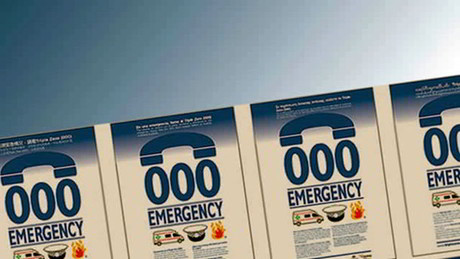Triple Zero location tracking boosted

Calls to Triple Zero (000) from mobile phones now contain improved location information, following upgrades to the Triple Zero service.
Of the 8.3 million calls made to Triple Zero in 2014–15, 66.9% — 5.6 million — were from mobile phones.
“Locating callers quickly in an emergency situation is vital, and I congratulate the mobile carriers and emergency services organisations (ESOs) on this tremendous initiative,” said Acting ACMA Chairman Richard Bean.
“Optus, Vodafone, Telstra (in its capacity as mobile carrier, the emergency call provider and initial answering point for Triple Zero 000 calls) and ESOs have been working in partnership to upgrade their relevant systems,” he added.
Announced at a recent meeting of the ACMA’s Emergency Call Services Advisory Committee, all ESOs throughout Australia have implemented functionality to automatically receive better information about the location of a mobile caller to Triple Zero.
Unlike fixed landline phones, emergency calls from mobile phones have not previously been able to automatically give emergency services potentially helpful information about the caller’s location.
Emergency services can now receive automated location information derived from the mobile networks for most phone calls to Triple Zero. In some circumstances, this will be a very helpful supplement to information provided verbally by the caller about their location.
Caller location can potentially be narrowed down to a radius ranging from 50 m to 90 km, with the degree of accuracy influenced by the number of base stations within a given handset’s vicinity.
Accuracy is greater in built-up and more urban areas where the majority of calls originate and less accurate but still useful where base station deployment is sparse, more likely in rural or remote areas.
The ACMA regulates and monitors the provision of the emergency call service under the Telecommunications (Emergency Call Service) Determination 2009. The determination imposes obligations upon the emergency call service provider, telecommunications carriers and carriage service providers.
The Triple Zero emergency call service uses an operator-assisted telephone service which connects callers to police, fire or ambulance in life-threatening or time-critical situations.
Telstra, as the emergency call service provider for Triple Zero, continues to perform above the regulatory requirement for answering emergency calls. In 2014–15, 98.7% of calls were answered within 10 seconds against a target of 95%.
Australia’s Triple Zero Awareness Working Group released a mobile smartphone app — Emergency + — in December 2013 for iOS, Android and recent Windows handsets to take advantage of handset GPS capability. The app shows users GPS coordinates which can then be verbally passed on to emergency services.
Why P25 technology remains a good fit for public safety communications
Digital LMR technology ensures police officers, firefighters and emergency management teams can...
From past to present: leveraging satellite data for better disaster resilience
Whether monitoring flood-prone regions or assessing wildfire-prone landscapes, historical...
Lancashire Police adds in-car video to full vehicle fleet
Motorola Solutions' M500 in-car video solution observes a vehicle's environment from...





